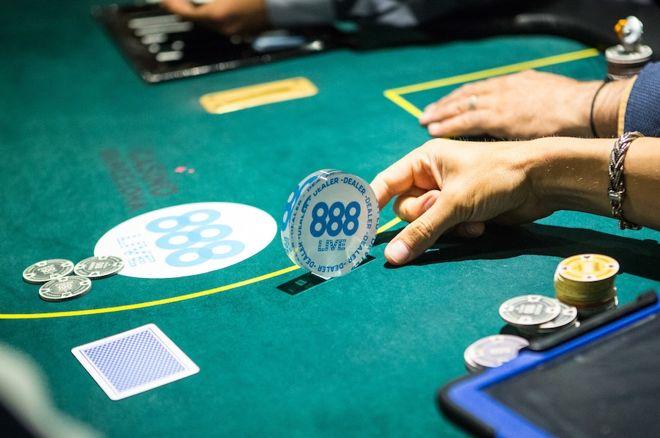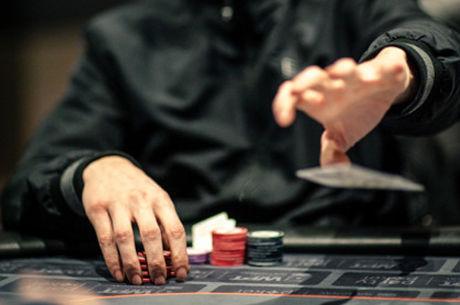Getting Comfortable With Wider Ranges: Button Play

In the first two articles of this series, I discussed playing wider ranges both from the big blind and from the small blind. We saw how being out of position makes this difficult, but playing wider ranges is something that must be done in order to keep the original raiser from stealing with any two cards.
Meanwhile the player in the best position to play wider ranges is the one on the button. Let's round out this discussion by exploring how to get comfortable playing wider ranges from the button as well.
Button vs. Blinds is No-Limit Hold'em
The central theme in the game of no-limit hold'em is this struggle in which the button uses positional advantage to steal from the blinds who must play back from their disadvantaged positions because of the forced bets.
This is a highly profitable situation for me when I am the player on the button. Allowing those on my right to take away this opportunity over and over again almost guarantees I will lose my stack in the long run. For this reason, defending the button is just as important as defending the blinds... if not more so.
Defending the Button by Three-Betting
I mostly defend my button against loose openers by three-betting in order to avoid many of the same pitfalls of flatting that I previously discussed in the small blind article. If the opener is weak and flats too many three-bets, I use a depolarized range which consists of pretty much any hand I think is ahead of their opening range and plays well postflop.
If my opponent is likely to respond with a three-bet or a fold, I select hands that don't play amazingly well postflop like suited-gappers and hands with ace-blockers, as well as hands with which I am happy to play for stacks.
This is not something I did frequently in the past because I was uncomfortable playing these wide ranges in big pots. Understanding just how valuable the button is and realizing that it was constantly being stolen from me, I became motivated to step outside of my comfort zone and fight back.
What I discovered by doing so is that playing bigger pots against openers who flat my three-bets with ranges just as weak as mine �� only without the benefit of position or the initiative �� is an even more profitable opportunity than open-raising from the button in the first place.
Defending the Button by Flatting
Again, when facing weak players who open too many hands and call too many three-bets, you really should be three-betting them with a large percentage of hands from the button. However, better players will begin to four-bet you light if you do this too often.
Against this player type, you have to flat with hands that play well postflop. These include hands like suited Broadways and medium pairs. A rule of thumb I like to use is if I think there is a good chance I may face a four-bet, then I just call the open with any hand that would be tough to fold if the opener came over the top of my three-bet.
Conclusion
No-limit hold'em is, in essence, a game where the button uses positional advantage to try and steal from the blinds. A player widening his late position steal ranges in order to take more than his fair share of the pots opens up highly profitable resteal spots from the button that I must get comfortable taking advantage of with wider ranges than I am currently used to.
Perhaps you should consider doing the same. After all, we will never get comfortable playing these wider ranges unless we actually start playing them.









